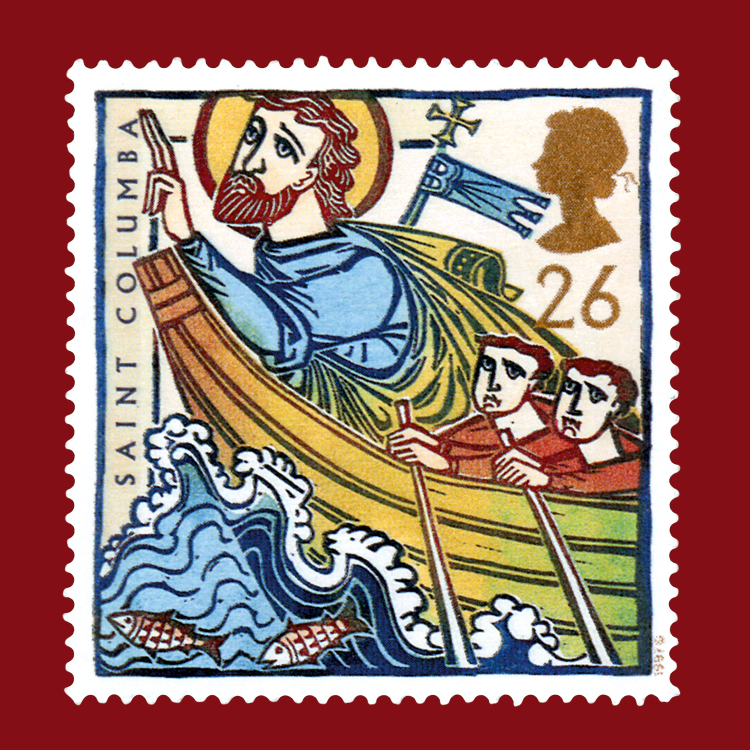The Rediscovery of Pilgrimage
Added about 5 years ago by Stephen Platten
 Pilgrimage has had a renaissance in recent years. At the release of his new book on the subject, Stephen Platten explores the history of Christian pilgrimage and why it remains a popular and fulfilling spiritual experience today.
Pilgrimage has had a renaissance in recent years. At the release of his new book on the subject, Stephen Platten explores the history of Christian pilgrimage and why it remains a popular and fulfilling spiritual experience today.
In the mid-1990s, novelist David Lodge published his book Therapy. As with most of his novels, there is much humour, but there is pathos too—and there are always underlying themes. Lodge was born a cradle Catholic and, in this book, one of the themes is the Spanish Camino, the route to Santiago de Compostela. As he tells the story, so we see how journeying is at the heart of the experience—the people he meets, the friendships he makes, the places he passes and, finally, the arrival at the pilgrimage destination. It’s a very good read and it opens up the remarkable impact of being a pilgrim and of pilgrimage centres. All across Spain and the rest of Europe, there are roads marked up for hundreds, indeed thousands of miles with miniature golden scallop shells, the mark of pilgrimage. Pilgrims would arrive at Santiago but then journey on for a day to Finistera, on the far north-east coast of Spain and pick up a scallop shell from the beach to prove they had completed the journey.
But Spain is far from unique here. Britain and Ireland have a long history of such journeying too. Thomas Becket’s murder and his subsequent canonization made Canterbury a key destination—the Pilgrim’s Way from London to Canterbury and across southern England is still marked on maps today. Then, the death of holy Cuthbert in the seventh century, and the amazing odyssey of the monks who took his body through the Scottish Borders and across northern England to save their precious treasure from the pillaging Danes, led to Durham becoming a great pilgrimage centre.
If one delves into the extraordinary narrative of The Book of Margery Kempe, written in the early fifteenth century, you find this eccentric and tiresome mystic making pilgrimage to Walsingham, Hailes, Assisi, Rome, Jerusalem, and even to Vadstena in Sweden. In the Middle Ages, pilgrimage was the regular pattern for holidays, for celebrating “holy days”. At the Reformation many Protestants abhorred this tradition since it often was caught up in the selling of indulgences and in a commercialized pattern of religious corruption!
Now, 500 years on, pilgrimage has been rediscovered. It has become an invigorating and engaging way into the Christian story and into prayer and worship. Indeed the word pilgrimage has a far broader currency. People talk of making pilgrimage to the places of their youth, there is talk of life as a pilgrimage, and there is more journeying of pilgrims now than ever before. Compostela and Assisi are alive with pilgrim songs. Our own cathedrals have become pilgrim centres. Often tourists are transformed into pilgrims through the journey or the experience.
My new book, Pilgrims, starts just there. In each chapter we encounter history, story and place. We learn something of the saints who gave these places a true aura of holiness: Ciaran at Clonmacnoise, Kentigern or Mungo in Glasgow, Cuthbert in Durham, Becket in Canterbury, David and Non in St David’s. We encounter the Irish Celtic missionaries setting out on journeys to they know not where—when they land, they know that their task is to tell the story of Jesus Christ to those who live there. Thus it was with St Fursey, leaping into a tiny boat with companions on the west of Ireland and landing by the remains of a great Roman fort near to modern day Great Yarmouth. Or there was Columba, from a noble family in Ireland, leaving Derry and landing on a remote island next to Mull in the Inner Hebrides.
So developed one pattern of pilgrimage, immortalised in the legendary Voyage of St Brendan. But the other pattern is more familiar to many. One of the earliest accounts is of the Spanish sister Egeria visiting the holy places in Jerusalem in the fourth century. Holy places have a magnetism—often, they are the site of a martyr’s shrine or sometimes a place of visions, for example, Walsingham or Medjugorje in modern-day Croatia. Countless souls over the ages have set out on such a journey for a multitude of different reasons. St Wilfrid sought safety in exile in Rome, King Henry II of England made penitence in his journey to Rome, following Becket’s murder—whereas others now travel for solace, as seekers or even simply for curiosity’s sake.
This has meant that the destinations themselves have developed extraordinary character, including the splendid cathedrals at Canterbury and Durham. Other amazing cathedrals—Lincoln and Norwich, for example—have no shrine, but gather pilgrims as vast houses of prayer, buildings built in stunning style to the greater glory of God. Their architecture is sufficient to bring people to their knees.
Of course, along the journey, friendships would spring up and vocations would be nurtured—perhaps to the monastic life or to the priesthood. But classically, stories would be told—the most celebrated collection is, of course, Geoffrey Chaucer’s Canterbury Tales. They remain entertaining and very perceptive now, almost seven centuries on.
 Pilgrims will take you all over England, Ireland, Scotland and Wales. It can be used as a handbook when one is visiting that part of the country which includes one of these remarkable centres. Equally, it can be used to introduce you to a deeper understanding of the tradition of pilgrimage and indeed to the Christian story itself. It is ideal too for use in groups. The final chapter indicates how journeying takes us to the very heart of the Christian story in the ministry, passion, death and resurrection of Jesus Christ. It is likely that the earliest of all these patterns was a form of what we would now call “Stations of the Cross”, journeying through the places of Jesus final days. It is most likely that such pilgrimage stands behind the passion stories of the gospels.
Pilgrims will take you all over England, Ireland, Scotland and Wales. It can be used as a handbook when one is visiting that part of the country which includes one of these remarkable centres. Equally, it can be used to introduce you to a deeper understanding of the tradition of pilgrimage and indeed to the Christian story itself. It is ideal too for use in groups. The final chapter indicates how journeying takes us to the very heart of the Christian story in the ministry, passion, death and resurrection of Jesus Christ. It is likely that the earliest of all these patterns was a form of what we would now call “Stations of the Cross”, journeying through the places of Jesus final days. It is most likely that such pilgrimage stands behind the passion stories of the gospels.
The cover of Pilgrims is an image of a postage stamp from the 1997 celebrations of Augustine and Columba. An intrepid Columba leads his more uncertain companions over an unfriendly sea, but oh, what would be the fruits of their arrival!
Stephen Platten is an Assistant Bishop in the Dioceses of London, Southwark, and Newcastle. He has written extensively on theology, cathedrals and associated topics. His latest book, Pilgrims, explores the idea of pilgrimage through the ages and some of Britain and Ireland's most popular sites today. Get your copy here.
Please note: Sacristy Press does not necessarily share or endorse the views of the guest contributors to this blog.
